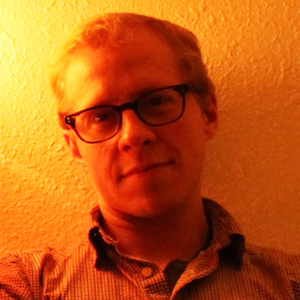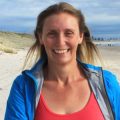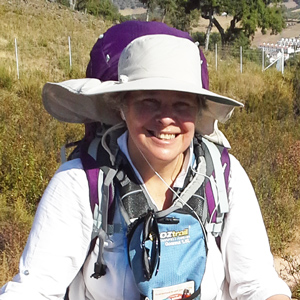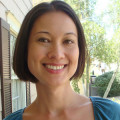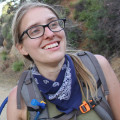Billy Ulmer’s Quest to Visit 10 Tiny Houses Across America
This is a quest case study. (Read others or nominate yourself.)
When I heard about Billy Ulmer’s quest to interview people living in tiny houses, I couldn’t help but think of Dee Williams, one of the 2014 WDS speakers. Funny enough, she was one of his first interviews! Here’s Billy’s story.
Introduce yourself and your quest.
My name is Billy and I’m a writer and photographer from Portland, Oregon. In 2014, I completed the first phase of what has become an ongoing quest: I visited 10 tiny houses across America, did in-depth interviews with the people that designed, built and live in them, and shared their inspiring stories.
I met people in Oregon, Washington, Idaho, New Mexico, Texas, Ohio, New York and West Virginia, and learned how choosing an unlikely home changed their lives.
Why did you decide to undertake your quest?
I’d been in the marketing department at a perfectly nice small business for almost five years, but had to leave because I knew it wasn’t what I was supposed to do with myself. I had this hazy, hairbrained scheme to interview people choosing lesser-known life paths to understand how one choice affects the another – say, how a tiny house influences where you work, how you hang out, and how you see the world.
I wanted to tell detailed, vivid stories about real people. Whenever I’ve wanted to do something surprising in my own life, it only felt possible when I could connect with people who had already done it.
While brainstorming, I started freelance marketing for PAD Tiny Houses, a small company that teaches people how to design and build tiny homes. I kept telling my clients, “You have a big opportunity here,” but they had enough on their plates. Then one day I realized, “Oh, this is MY opportunity.”
Were you nervous about taking the opportunity?
I was pretty scared to actually launch a website to share my project. What if people thought it sucked? Or didn’t respond? I was a timid writer, and even considered locking all my original posts from comments – which would have been the exact opposite of how to connect with people.
It took courage to have open lines of communication, and thus it was huge to me that people commented or wrote me to say that the stories resonated with them. Hearing someone say, “This means something to me,” is well worth the struggle of creation and the vulnerability of sharing.
What are the costs associated with gathering tiny house interviews?
Traveling to ten tiny houses across eight states cost me $2,750, which I funded out of my own bank account. I was confident those costs would pay themselves back if I shared the stories well. I collected the interviews and photos in an ebook that paid back those costs after about two months.
To keep costs low, I stayed with friends while traveling, and while producing the book I bartered with friends for help.
What memorable encounter is fresh in your mind?
I spoke a woman named Candice, who lives in her tiny house with her mother, Baoying. They both immigrated from China, but Candice had lived in the U.S for much longer than her mom. When I asked Candice about Baoying’s experience in the house, she said, “Let’s just ask her,” and climbed up to the sleeping loft to live-translate her mother’s story to me.
Watching these two women describe not only the cultural transition from conventional house to tiny house, but the transition from a Chinese house to an American house, kind of took my breath away. It was the first moment in my project that I really thought, “I can tell that I have changed my life, because I never could have imagined this experience, and there’s no other way I would be having it.”
How did you overcome a low point in your quest?
Translating an experience from “something meaningful to me” to “something I can explain so it’s meaningful to others,” is hard work. The hardest part of my quest was finishing the draft of the ebook. The excitement of the travel was over, but I didn’t have a product to show to anyone yet. It’s tough to pour all your time into something that you’re then hiding because it’s not complete enough to make sense to others.
My saving grace was that the project was public. Without that accountability I would have toiled away in secret, chasing unattainable perfection forever. Instead, I set a launch date, stuck to it, and am excited for what is next.
What did you learn along the way?
Visiting a remote home in Southwest Texas taught me how someone went from big city fashion photographer to off-grid desert-dweller, and brought me through the odd little art town of Marfa, which I’d heard about for years but had never been anywhere near. I explored the charming main street of quirky Yellow Springs, Ohio while visiting a couple who helped me understand how community design influences the economic viability of small towns.
I made people my destinations instead of places, which brought me to corners of America and I got to see those corners through the eyes of people who actually live there.
Did anything come as a surprise to you during your quest?
Everybody I contacted said, “Sure, fly across the country and come take pictures of me.” Everyone I wrote to with an interview request said yes, even the people who had already been on NPR or in the New York Times. I thought for sure they’d ignore a little project like mine, but everyone was generous and open with their stories.
What kind of support did you receive from others?
My friends in the tiny house community helped give me a warm introduction to some of the people I interviewed, including really amazing people I never could have found by just using Google.
A different set of friends played an important role too: I was really concerned with how I would find a supportive, critical set of editorial eyes who understood my goal for the project. I ended up working with three friends who all had different backgrounds in writing, and who had totally different perspectives on tiny houses. It felt like a gamble at the time, but in retrospect it was ideal for me to have diverse feedback from people I really trusted, even if they weren’t “professionals.” I felt understood, yet pushed – what better feeling for a quest?
Do you have any advice for someone who might be starting a quest?
Make sure you’re excited about both the end goal of the quest and the process it will take you through. Sometimes I felt like I had to chain myself to my desk to write, but then I’d pause and say, “You had this crazy dream, and now you’re actually executing it. It’s not supposed to be easy, it’s supposed to be a challenge you love.” Then I’d go back to work smiling.
What’s next?
The themes that emerged as I interviewed people about how their tiny homes changed their lives were universal: they wanted freedom, community, peace, flexibility, adventure, and they found an unexpected way to get it. Doing on-site interviews with people making unlikely life choices will only continue from here.
Keep up to date on Billy’s quest at his site, Unlikely Lives, or via Twitter @UnlikelyLives.
###
